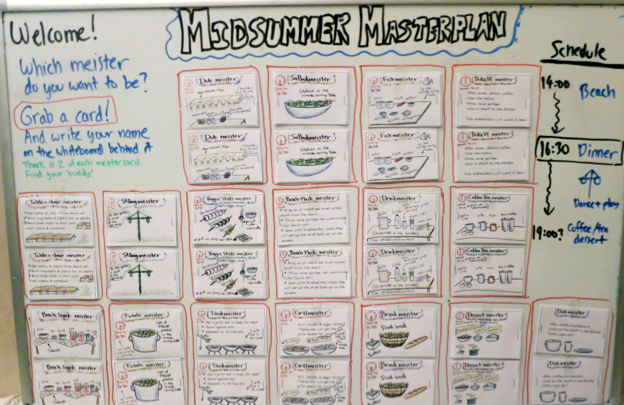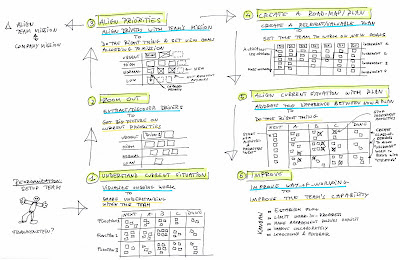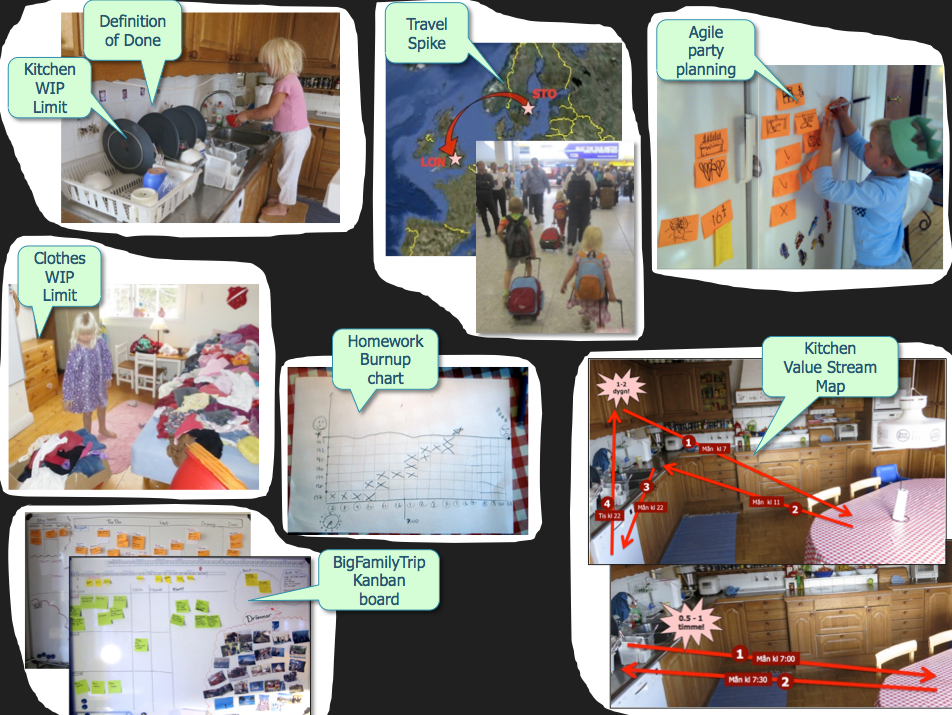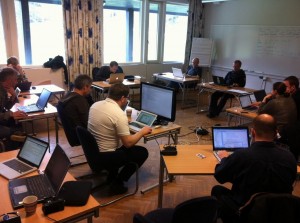Here is an illustration on how the coordinate systems of the screen and JavaFX objects relate to each other. It is a great thing with JavaFX that you seldom bother about screen coordinates. Instead you rely on layout managers to position your nodes on screen. A node has its own coordinate system, should you like to do some positioning, e.g. in a game.
Continue reading
Crisp's BlogPage 21
from the Crisp Consultants
Light-weight problem solving template
Here’s my default approach to problem solving and organizational change. Basically a light-weight version of the A3 problem solving approach and Toyota Kata.
(BTW my keynote at ALE2012 next week is on a similar topic: “Everybody wants Change, but nobody likes to Be Changed”)
A Crisp New Web
As a visitor to the Crisp Blog, you may have noticed that we’ve launched a new web site on www.crisp.se?
Apart from a new design, we’ve also changed CMS from imCMS by imCode to open source WordPress.
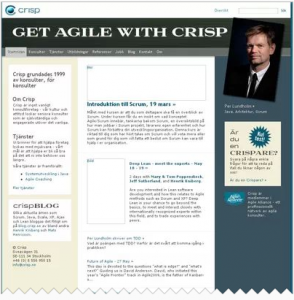
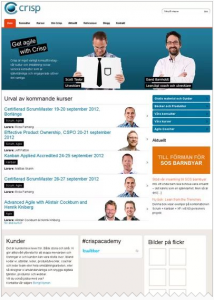
Lean from the Trenches @ Agile2012, Dallas
Here are the slides for my talk “Lean from the Trenches” at Agile2012. And here is the book/ebook, in case you want more details (unfortunately sold out in the conference bookstore). Thanks for attending!
Continue readingWeb Whiteboard – the simplest way to write and draw together online
OK, nothing beats face to face. But suppose you’re not in the same location – because you’re on the phone or a skype call – and you still want to write and draw together. Or you’re on a distributed team and want a simple shared workspace, just like you would if you were in the same
Continue readingAn Analog Clock in JavaFX
JavaFX is great fun but there are so many ways of doing things. You can use FXML, you can use images to build things piecewise or you can write code for a live, scalable design. The latter is the case here where I show how I created an analog clock using Java code.
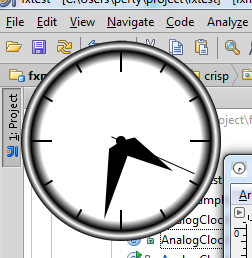
The clock is designed with the clockwork in a separate class and the face in another.
This text shows some example JavaFX code in Java slightly above introductory level. You should have your development set up and done at least a first program.
R3 – den agila formeln
För ett halvt decennium sedan när jag skulle börja som utvecklingschef på Polopoly kände jag att jag behövde ett verktyg som hjälpte mig att sammanfatta andemeningen och de praktiska konsekvenserna av Agile, Scrum, XP och Lean. Var och en av dessa innehåller en rad – i viss mån överlappande – begrep, som är tydliga och om man kan dem inte så svåra att förklara – om man har många timmar på sig. Men hur minns man hela denna komplexa väv? Hur kan man uttrycka den enkelt, snabbt och koncist?
Self-organizing a 50 person party
Sunshine. Over 35 adults and 15 kids milling about, playing and socializing. Some down by the beach eating snacks and windsurfing. Work going on in the background: Pototoes being boiled, tables being set, drinks brought out, BBQ lit. Nobody is giving orders, things are just happening. Looks rather chaotic. But then at 16:30, precisely on
Continue readingResponsibility the Agile way
I am a teacher of Agile methodologies which means that I teach collective responsibility. I often get the response that ”everybody’s responsibility is no one’s responsibility”. To make everyone really take responsibility we need to define what we mean with responsibility the Agile way. Here is at least my version:
We are all responsible for contributing with our intelligence and senses for the best of the product and the process. We are also responsible doing what we have said we will do and being transparent with our progress.
If you think that is too fluffy, here comes more details about what I think Agile responsibility means:
Setting-up a Kanban system: the picture
I would like to share a picture that I have beeing using a lot when helping a team setup a Kanban system. I just love good pictures. They are so direct and can help you grasp a whole context and how to act on it. Actually, a dream improvement of the A3 thinking would be
Continue readingHow to align Teams Priorities after Re-org?
My current customer went through a re-organization of the whole IT department in search for a faster, more value-centered IT. The ambition looks great on paper and the future will tell if it helped. Anyway, a lot of teams were disolved and new teams were formed in the wake of the change. These new teams
Continue readingSpeaking at NFI’s “Från Krav till System 2012” Conference
As you may have noticed, I am quite into User Story Mapping right now. I find it an excellent way to establish a constructive dialog between the customer(s) and the team, as well as between the different specialists within the team. Such a dialog is the best insurance to get the “right” product/service that will
Continue readingA New Look at IID
I was quite impressed by last year’s Lean Kanban Central Europe 2011 (LKCE11) conference. The speakers were great and the organization of the conference was outstanding. So, I decided to try to repeat my feat from last year by getting invited as a speaker. Just to make it bit more challenging, this year my contribution
Continue readingClamp The Code
Remote seminar – result of first experiment
I was invited by Agilenetið to come to Iceland and do a talk. That didn’t fit my travel schedule, so we instead decided to do an experimental “remote seminar”. That is, with me on a video link instead of physically in Iceland. I’ve done webinars before, and usually miss the interactivity. I wanted it to “feel” like I was there, discussing and interacting with the participants.

Here’s what we learned:
Pomodoro meeting
While reading a blog post by my Crisp colleague Anders Laestadius I remembered a meeting type I tried a few years ago. We called it “Pomodoro meeting” since it was timeboxed to 25 minutes, just as the time management technique Pomodoro.
This is how it was conducted:
Bootstrapping an agile project with continuous deployment using cloudbees
Starting from scratch, this video demos how to quickly get to a fully agile project setup with continuous deployment. Everything is in the cloud – GIT repo, Jenkins, MongoDB, and the app server. The system deploys automatically with every successful commit. The app itself is minimal, but does have a simple web interface and a
Continue readingHow we coach change at Crisp
I got a number of questions recently in how we at Crisp work with changes. So I decided to write it down. Here’s how we think and coach change 🙂 Cheers /Mattias
Continue readingMetrics – what to measure? (Agila mätetal i praktiken)
Here are the slides from my metrics talk “Agila mätetal i praktiken” at Dataföreningen in Stockholm. Lots of very engaged and experienced participants, lots of interesting discussions, thanks for coming!
Continue readingContext Appropriate Performance Testing at Let’s Test
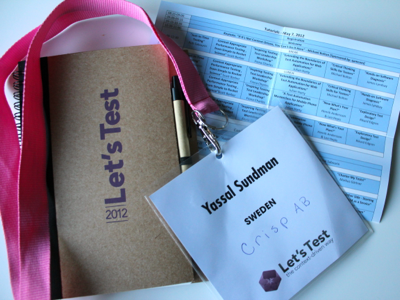 The Let’s Test conference (“A European conference on context-driven testing – for testers, by testers”) kicked off today in Sweden. I know, I’m not a tester, so why was I at the conference? Certainly it wasn’t the “context-driven” that drew me, since before I heard of the conference I didn’t really know what that was. The “for testers, by testers” wasn’t so inviting to me as a developer, even though as a member of an agile team I write unit and regression tests, and participate in functional and exploratory testing.
The Let’s Test conference (“A European conference on context-driven testing – for testers, by testers”) kicked off today in Sweden. I know, I’m not a tester, so why was I at the conference? Certainly it wasn’t the “context-driven” that drew me, since before I heard of the conference I didn’t really know what that was. The “for testers, by testers” wasn’t so inviting to me as a developer, even though as a member of an agile team I write unit and regression tests, and participate in functional and exploratory testing.
It was actually Scott Barber’s tutorial description that got me to sign up:Continue reading
Agile@Home – simplifying life using agile and lean principles
Here are annotated slides from my lighting talk Agile@Home at Agila Sverige 2012. Have you tried a BBQ board? Or a travel spike? Or a homework burnup chart? How about Limiting WIP in the kitchen, or the closet? How about agile party planning? There are plenty of ways that Agile and Lean practices and ideas
Continue readingCrisp Hackday is under way!
The safety belt is off. Focus is intense. Standup? Tdd? Rubbish! Crisp hack day! 🙂
Continue readingInsights from Innovation games with Luke Hohmann
I got the chance to meet Luke, the founder of innovation games this week. I find his view refreshing – humans are basically creative. We need to provide the platform for ideas to emerge. Some of my reflections after listening to the stories: It’s serious play, these games shape the outcome of of real products
Continue readingSlides from the Selenium Conference
I gave a presentation called ”Being good at waiting – Using Selenium to test Ajax-intensive pages” in an unconf session at the Selenium Conference in London.
The audience was great! Thanks everybody! I certainly didn’t know everything there’s to know about the subject, and that resulted in an interactive session where people from the audience would share their experience and answer some questions. That was so cool 🙂
Continue reading
Slides from SDC2012 – Modern product development principles
Just finished my session at SDC 2012 where I’m arguing for less hierarchy and economically aligned decision rules that enables local teams to do tradeoffs. Mary Poppendieck commented it as “traditional product management”. Maybe that’s where we are heading 🙂 Anyway, here are the slides
Continue readingValue driven meetings
Today at Crisp, we had a short discussion about effective meetings where I described what I think are needed in order to have successful meetings. Meetings, like work meetings, are used to produce some kind of result, achieve a agreed on decision or solve a problem. The discussion got me thinking about how often we are overloaded with meetings where many of them give little value back to the project and organization.
Paul Graham describes two different schedules, the manager and the makers schedule, where the former is run by managers working through the day participating in a lot of different meetings, and the latter is run by the workers, the developers and project participants, working through the day developing new versions of the product they are accountable for producing. These two schedules have their place in an organization, but we may get in trouble when the two schedules meet each other, which they do now and then during a normal working day.
Meetings cost quite a lot, and it is often not obvious for the managers working under the manager schedule how big that cost really is. I believe we need some kind of structure, an agreement between the meeting participants and the organizer of what they need to prepare and do before the meeting, in order to guarantee that it will be as efficient as possible. This to ensure that the organization get some kind of ROI from having the meeting.
Make it possible; change your statement into a question
Not long ago I met with a manager who during a discussion ruled out the possibility of success of a solution. I was a bit surprised and afterwards asked why that was not doable. It turned out one of the reasons was the managers fear the team would kick off with unrealistic expectations and leave
Continue readingBig Family Trip – What we learned about the world after 6 months on the road
I’m now back in Sweden after a 6 month Big Family Trip. It has been an incredible adventure, I’m so glad we pulled it off!
We have travelled around the world through eight countries. Denmark, China, Japan, Thailand, New Zealand, Peru, Brazil, and the British Virgin Islands in the West Indies. All in all, most things worked out better than we could have imagined.
The Compelling Case for Node.js
The basic premise of Node.js is that I/O is expensive and that, since I/O is expensive, we can’t block waiting for it to complete.
Many traditional Web Servers typically adopt a one thread per request approach, and any I/O (database, web service, file system call…) during the request blocks that thread of execution. This is inefficient in many ways because when the thread is blocked waiting for I/O to complete, it can’t respond to other requests.
Improve the improvement process
Do you do Scrum? I would guess that 90% of Swedish programmers would answer yes.
Do you have retrospectives? Again most developers’ answer is, yes.
Will you empty the impediment backlog before the next retrospective? Silence.
This post is for those of you who remain silent after the last question.





